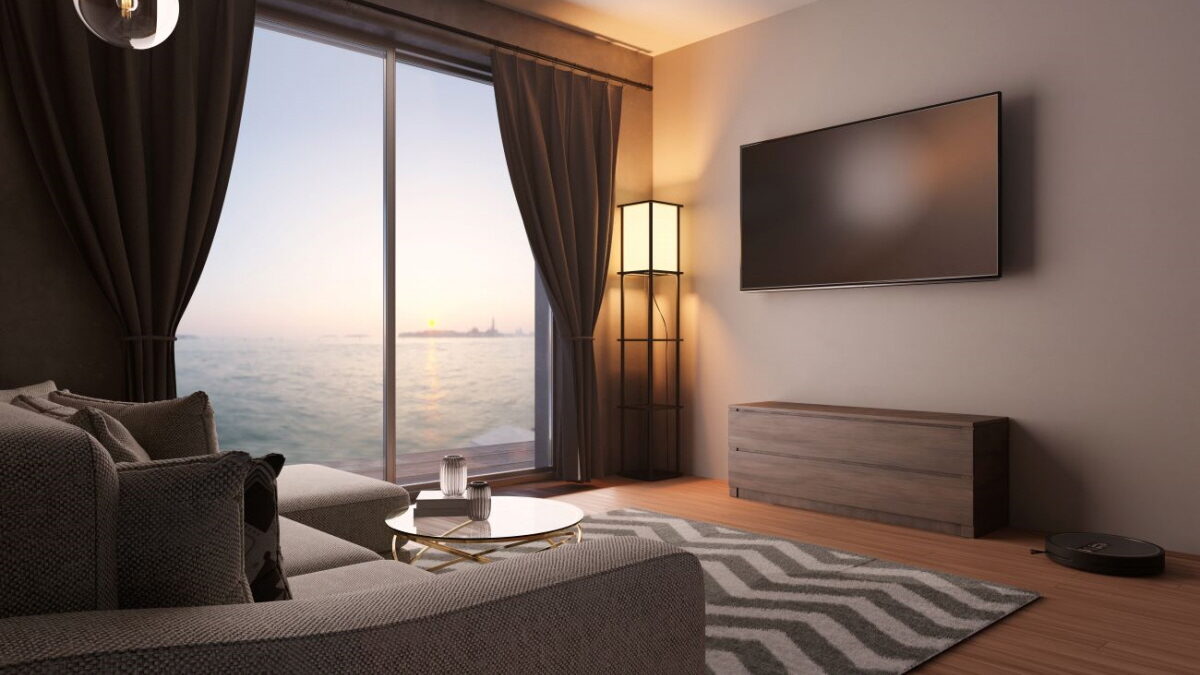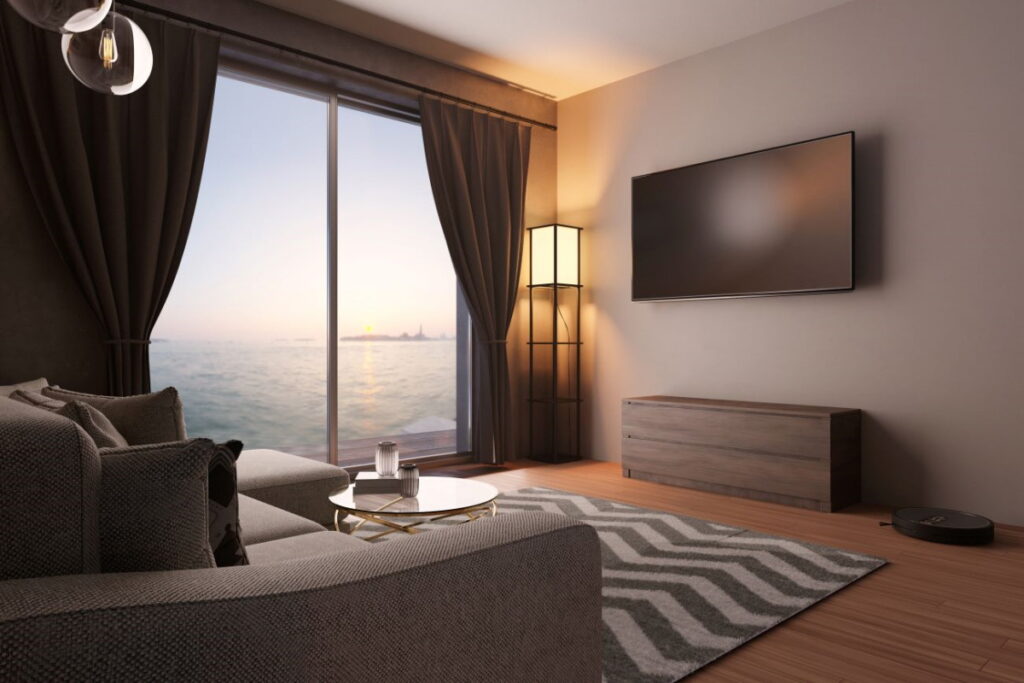
When choosing the perfect flooring solution for your living room, you have a multitude of options available to you. From carpet to hardwood to luxury vinyl tile, your choice of flooring can brighten up your space, contrast or accentuate the room’s existing features, and make it feel cozy and warm. While tile flooring may seem like an unusual choice for the living room, luxury vinyl tile is one of the top flooring choices for living rooms. In this article, we will give you an overview of six different tile options commonly used for living rooms and the pros and cons of each.
What is the best floor tile for your living room?
- Luxury Vinyl Tile (LVT)
- Ceramic Tile
- Porcelain Tile
- Hardwood Tile
- Linoleum Tile
- Natural Stone Tile
Luxury Vinyl Tile or Plank
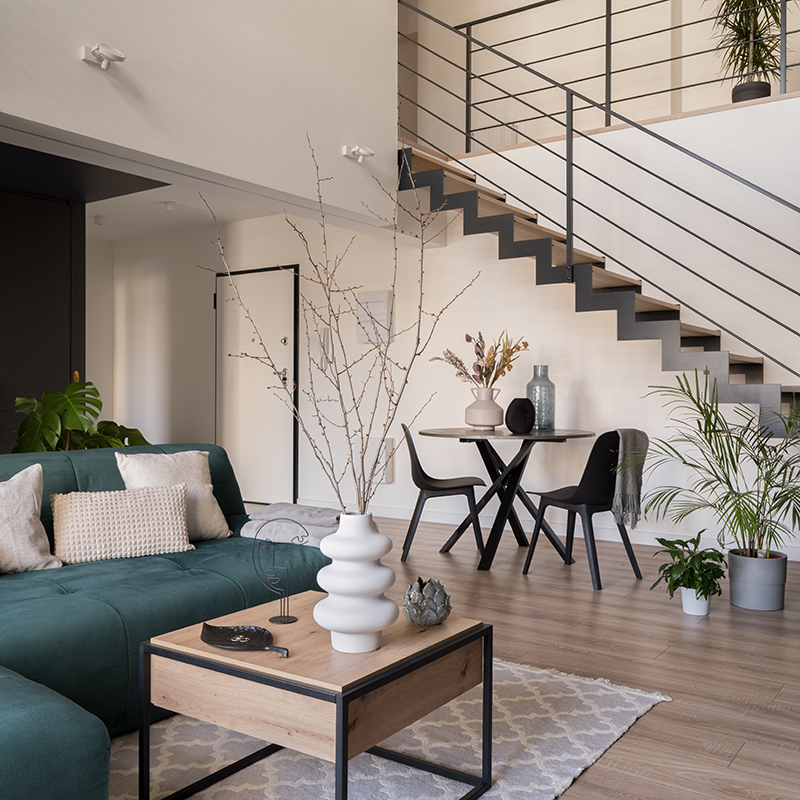

Ceramic Tile
Porcelain Tile
Porcelain tiles are a type of ceramic tile made from finer clays that are hardened at higher temperatures than typical ceramic. This process makes porcelain tiles less porous and more durable to avoid scratches and stains on the tile. However, this benefit means porcelain tiles are more expensive than standard ceramic tiles. Just like ceramic tiles and LVTs, they can be found in numerous color and pattern options, along with mimicking the look of natural materials.
Engineered Hardwood Tile
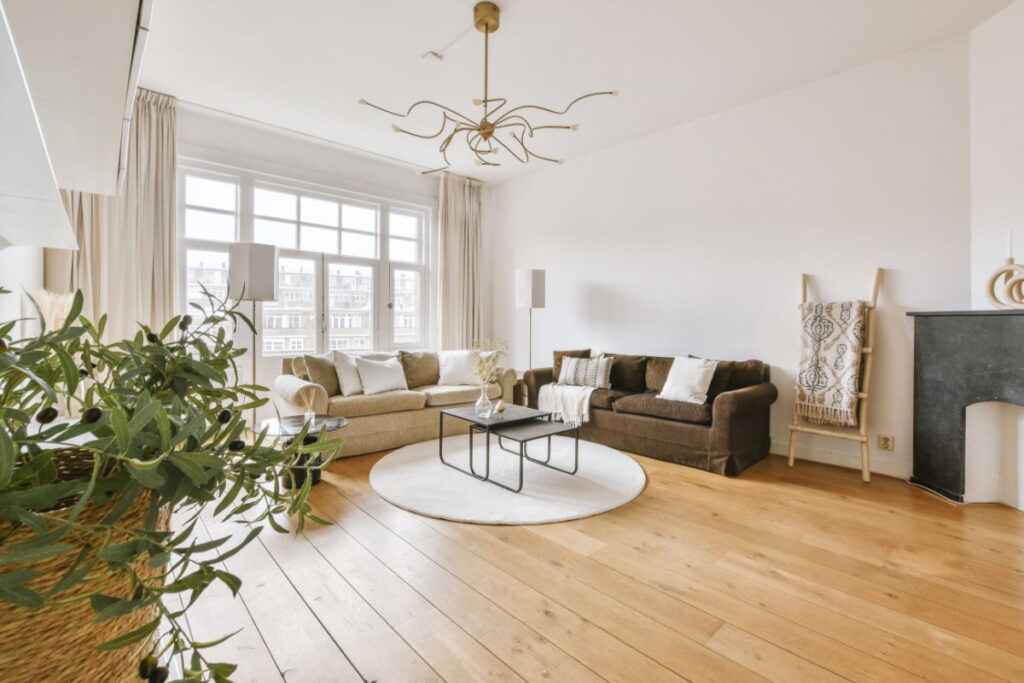
If you’ve always wanted real hardwood floors in your home but can’t justify their cost, engineered hardwood tile may be the best solution for you. As its name suggests, these tiles/planks are made from engineered wood to give your home that genuine hardwood floor look and feel. While these floors are more costly than other tile options, they are incredibly durable and easy to install. Hardwood tiles come in several different design options, so you can choose what fits best in your home.
Linoleum Tile
Linoleum tiles are made from linseed oil and cork dust. Like LVTs, ceramic, and porcelain, linoleum tiles can be made to imitate natural materials like wood and stone. However, they are not available in as many designs as vinyl tile. These tiles are dirt- and dust-resistant, making this type of floor easy to maintain. The affordable cost of linoleum flooring is a considerable benefit, but linoleum tiles will require professional installation, which can be expensive. The downside of linoleum is that it dents easily, which means there are better choices for a living room with heavy furniture.
Linoleum Tile
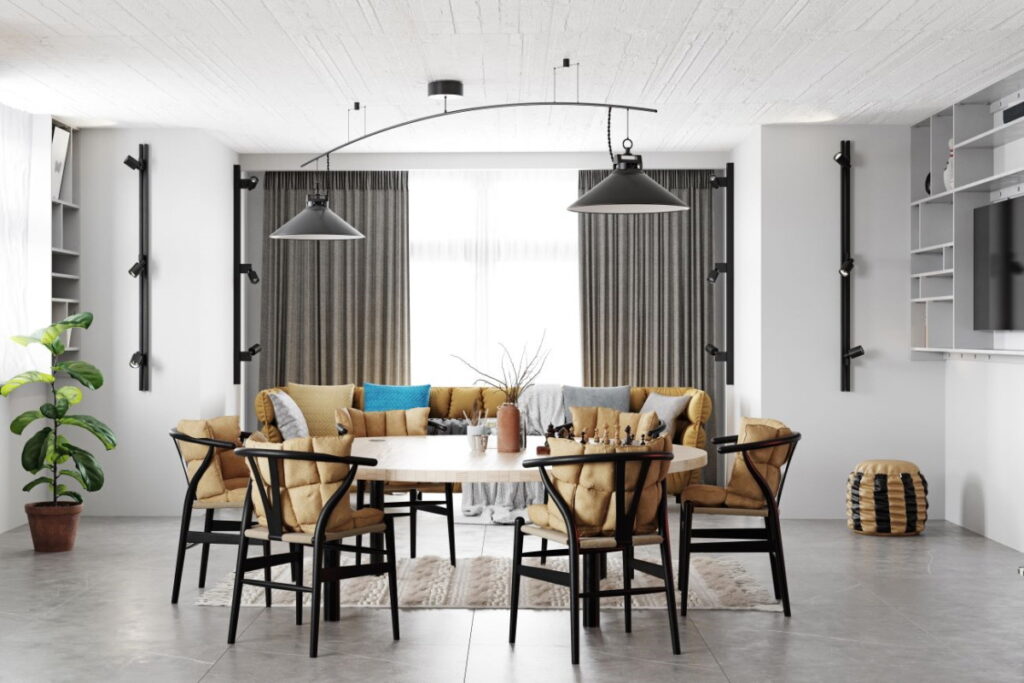
Natural stone tiles can make any living room feel sophisticated and will give your floor its own character that can bring the whole room together. There are countless stone flooring options, with marble, granite, and slate being among the most popular. Made from stone, these natural tiles are incredibly durable and resistant to the everyday wear and tear of high-traffic areas like your living room. While other types of tiles cannot match their durability on this list, stone tiles require much more maintenance than the other options. To maintain their durability, natural stone tiles must be resealed every five to six years to keep them water-, stain-, and scratch-resistant. Additionally, these types of tiles are some of the most expensive flooring solutions, and like ceramic and porcelain tiles, natural stone can be cold and uncomfortable.
Pros and Cons of tile flooring for your living room
Homeowners often hesitate to choose a tile floor for their living room, but many of today’s tile sand planks are sold choices. Here we will discuss some of the pros and cons of tile flooring for you to consider.
Pros
- Variety of Designs – Tile flooring options, such as LVTs, ceramic, porcelain, and linoleum, give you unmatched variety when choosing a color, style, and texture that best complements your living room.
- Easy to Clean and Maintain – Most tile floors only require sweeping and mopping to keep them clean.
- Repairing – When a tile breaks, you often only need to replace the broken tile to fix the floor, with a few exceptions.
- Long-lasting Durability – Tile flooring is water-, scratch-, and stain-resistant, making it ideal for high-traffic areas like the living room.
Cons
- Cold to the Touch – You probably want your living room to be warm and inviting, and stepping on a cold floor can ruin this feeling. Tile floors do not hold heat very well.
- Hard and Slippery – Even though tile floors are water-resistant, they can be hard and slippery, leading to hazards. However, there are two exceptions – vinyl and linoleum.
- Drop Resistance – Although most tiles have long-lasting durability, they are susceptible to scratches and cracking when heavy objects are dropped, especially ceramic and porcelain tiles.
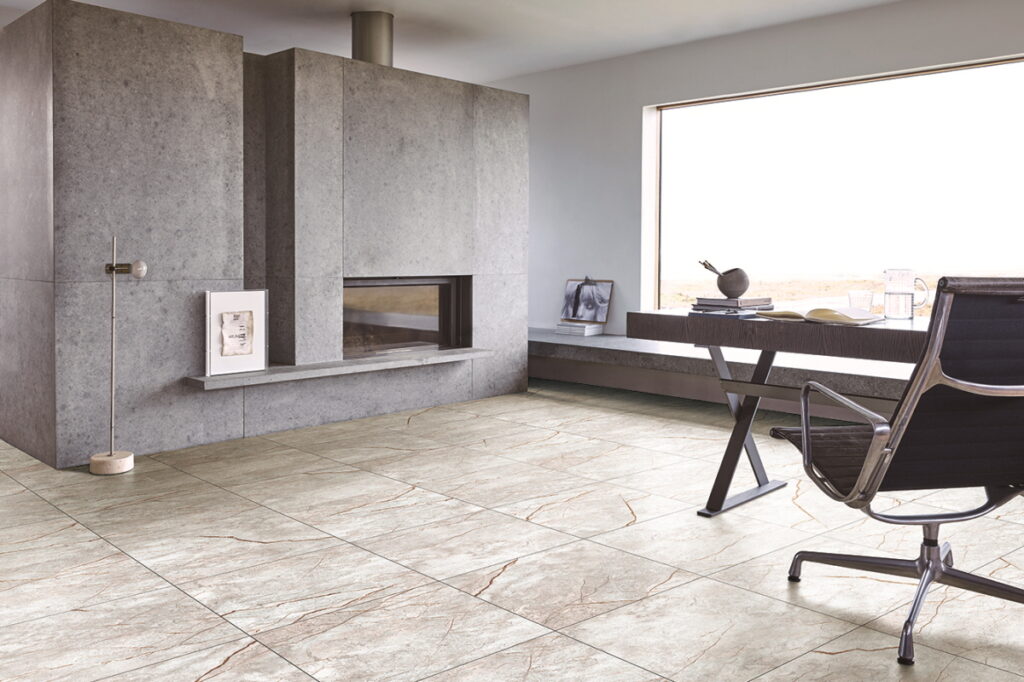
Contact Us
If you’re looking for flooring for your living room, check out LX Hausys’ luxury vinyl brand H·FLOR. If you need assistance with your selection or have any questions, the LX Hausys team will gladly help. To contact us, complete the contact form on our website, and a team member will email you as soon as possible.

